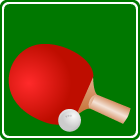


START
LESSON
GO TO THE GAMES
Click on the correct answer.
You will see the left side of an equation. Then you will see and hear two possible answers for the right side of that equation.
Click on the correct answer.
There are 10 questions in this test.
to start the lesson

anonymous 🦊
"Two variables"
Secondary math lessons to learn
'Polarity, strength of correlation' for 7th grade
7th grade / Statistics / Two variables / Scatter graphs / Polarity, strength of correlation
Polarity and strength of correlation for scatter graphs
Scatter graphs use dots or diagonal crosses to represent values that correlate the relationship between two variables. The scatter graph will indicate the degree to which the two variables are correlated (linked or related).
For instance, a scatter graph plotting altitude (x-axis) against Oxygen concentration (y-axis) will indicate a strong correlation between these two variables because Oxygen concentration reduces with altitude (the reason climbers can suffer from altitude sickness). On the other hand, a scatter graph plotting eye colour against exam results will show no correlation because these two variables have no causal relationship.
The polarity of a correlation can be characterised as "positive" or "negative". This indicates whether an imaginary straight line drawn through the points (a line of best fit) rises to the right (positive - as the x-axis variable increases, so does the variable on the y-axis) or falls to the right (negative - as the x-axis value increases, the y-axis variable decreases). So, thinking about our example of altitude plotted against Oxygen concentration, we will see a negative correlation because the concentration decreases as the altitude increases. A positive correlation would be seen if we plotted a child's age against shoe size: as their age increases, so does their shoe size.
The strength of a correlation can be characterised as "strong" or "weak". A strong correlation will be indicated on a scatter graph by points that closely follow a line of best fit. A weak correlation will show points that are more loosely concentrated around a line of best fit.
In this topic you are asked to decide which of the descriptions provided best describe the correlation between the variables plotted on the x and y axes. The possible options are:
- Strong positive correlation
- Strong negative correlation
- Weak positive correlation
- Weak negative correlation
- No correlation
With these interactive math lessons you will be learning "Polarity, strength of correlation" from
7th grade / Statistics / Two variables in 3 easy steps. The math in our lessons consists of 7 questions that ask you to identify the polarity and strength of any linear correlation for each of the given scatter graphs.
There are 3 easy math lesson activities in this "Polarity, strength of correlation" tutorial. These activities progress step by step to help you the learner gradually master this math topic. The activities are based on "3 stage questioning", a method of learning that quickly and easily builds your confidence as you work through the short series of lessons that strengthen your knowledge of the math that you want to learn.
When you have completed the tutorial for a topic, you should try some of our games before finally doing the test for your chosen topic. See the Help box below for detailed instructions on how to use the lesson activities to help you learn your math more easily.
UXO * Duck shoot * The frog flies * Pong * Cat and mouse * The beetle and the bee
Rock fall * Four in a row * Sow grow * Choose or lose * Mix and match





How to use our tutorials to learn
'Polarity, strength of correlation' for 7th grade
Introduction to the math topic
You start the tutorial with a lesson that introduces the math you will be learning. You will see a set of questions one at a time, and for each question you will see the written answer and also hear the answer to that question.
Repeat the question/answer by clicking on the brown speaker sign. Repeat the question/answer and expand the question graphic by clicking on the question box. Move between questions using the arrow buttons below the question. If there is additional information available for your chosen topic, the "i" button on the left upright bar will be brown on white. Click on the button to load the additional lesson information into the main interface.
Either / Or math lesson
This lesson moves on from the "Introduction" lesson and offers you two possible answers to each question. So, you will see a question then a voice will ask "Is this ... or is it ..." and you will have to choose which of the answers is the one that matches the question.
You choose an answer by clicking or tapping on one of the two answer boxes below the question. You can play the audio for each answer again by clicking on the speaker icon beside the written answer (if robot speech is available and enabled). The program will let you know each time whether you answered correctly. A star will light up red for a wrong answer or white/black for a correct answer.
This lesson asks you the questions in a random order compared to the introduction. At the end of the lesson, you can choose whether to repeat the lesson or move on to the next one.
What is it? math lesson
The final lesson of the tutorial shows you multiple possible answers for each question - you must choose the correct one. You are asked a question and below it are a list of two, three, or four possible written/numeric answers from this topic. Pressing the speaker icon will play the math audio for that answer.
For each picture, click on the answer that matches the question. The program will tell you whether you are right or not. As with the Either / Or activity a system of stars indicate your right and wrong answers. The What is it? lesson will show you all the questions you learned in the Introduction but in a random order.
When you complete the "What is it?" lesson, you can choose whether to go on to play some games with this topic, or whether you want to repeat some or all of the lesson activities in this tutorial. You should expect to get 80% of the answers correct in most of the activities before trying some of the Math games with this topic.











